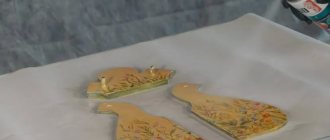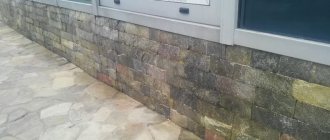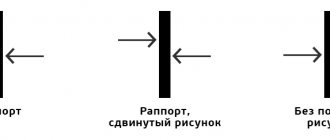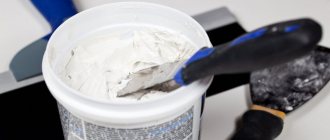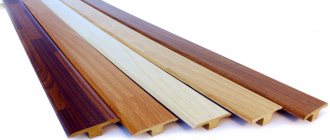Often, when you pick up an object shiny with metal, you are surprised at its light weight and realize that it is plastic or wood with a metal coating. Chemical metallization helps to obtain a mirror or matte nickel, chrome, copper or aluminum coating on ordinary ferrous metal or a non-metallic surface. Technology available not only in production, but also at home.
Details
Overview of methods
Features of obtaining galvanic coating
First of all, the galvanic layer will ensure the metal’s resistance to corrosion processes. When galvanizing, the parts will be in dense electrolytes. Thus, for the operation to be successful, special weights will be hung on the parts.
Please note that electroplated coatings will differ from metal ones in that they require a much larger number of contacts to create. The process of galvanizing plastic will also be characterized by the complexity of the preparation stage, because in this case it will be much more difficult to ensure an excellent degree of adhesion.
Adhesive properties of materials
A little more about metallization of plastics. The adhesion will be characterized by the quality of adhesion by different types of elements (in this case, we will talk about adhesion between plastic and metal). The adhesion strength between plastic and metal coatings should be between 0.8 and 1.5 kN per meter for peeling, and equal to 14 mPa for tensile strength. The maximum possible degree of adhesion achievable with modern technological means is approximately 14 kN per meter. The adhesion properties of materials will be one of the rather complex phenomena. It can also be said that there is no single theory that can fully answer all questions regarding the adhesion of various types of materials to each other.
From the point of view of chemical science, adhesion is a chemical relationship between bodies of different types. Chemical interactions can be seen on plastic surfaces. At such sites there are functionally active groups that will come into contact with metals or coat metal surfaces with oxides. The molecular approach interprets adhesion as a consequence of the presence of intermolecular forces on the interfacial surface, as well as the interaction of two poles or the appearance of hydrogen bonds.
This will explain, for example, the adhesion of wet etched polyethylene films after drying. Speaking from the point of view of electrical theory, adhesive properties appear due to the fact that when a pair of bodies interacts, a double electrical layer appears. As a result of this action, the layer will not allow the bodies to move away from each other, because electrostatic forces of mutual attraction of different charges work.
According to the diffusion theory (the most popular), adhesion will occur due to interactions of the intermolecular type, which features clearly manifest themselves when molecules penetrate each other into the surface layers. At the same time, a certain intermediate layer appears, as a result of which one can observe the absence of a clear boundary between the materials. And finally, the mechanical version of the theory would explain adhesion by an anchor type of clutch that protrudes pieces of metal into recesses on a plastic surface. Such depressions are quite small in area (several micrometers), but when chemically deposited metal gets into them, so-called mechanical locks appear.
Other parameters will also affect adhesion, including the following:
- Strength characteristics of plastic.
- The presence of chemically active groups on the surface of plastics favors the reaction.
- The presence of stimulants of adhesion processes, which can otherwise be called promoters (tin and chromium compounds, as well as plasticizers).
- The absence of anti-promoters that can prevent the strengthening or even destruction of the intermediate type of layer.
- The structure of the material that is chemically deposited, as well as the parameters under which deposition occurs.
Let's look at a couple more methods
Vacuum metallization method
The technology for vacuum metallization of plastics will consist of spraying nichrome or aluminum onto the surface of the plastic using a vacuum. The application of metal to plastic using a vacuum is carried out in a special chamber. The technique is widely used for applying metal films to various surfaces, for example, automobile parts, plumbing fixtures, plastic fittings, lighting equipment, etc. To clean metal, special paint and varnish compositions are used, which are characterized by an increased degree of hardness and resistance to moisture.
Metallization process at home
There are only a few known methods for independently applying metal to a plastic coating. The most accessible of them is chemical. In this case, no specialized equipment is required. The metals used for the process are copper and silver. The resulting film will be only a few microns thick, but it will give the base a beautiful appearance with a metallic-type sheen.
Metallization with copper
Before starting treatment, the surface should be sanded and degreased as best as possible. If the part has bulges (defects), these should be carefully eliminated. Apply abrasives to the surface and wipe the surfaces with a swab. If you are dealing with polyacrylates, for degreasing you will need a solution of caustic soda, in which the parts must be soaked for 24 hours.
It is recommended to use gasoline to degrease polyamides. When the product is degreased, it should be washed in distilled water, and then kept in a 0.5% solution of stannous chloride and hydrochloric acid (0.04 kg per liter) for 60 seconds.
This process is called sensitization. Its goal will be to obtain a film of tin hydroxide on plastic. After this process, the surface should be activated. To do this, soak the part for 3-4 minutes in a solution of silver nitrate (2 grams of silver per 1 liter and 2 grams of ethyl alcohol).
Next, place the product in a solution that consists of the following ingredients:
- Copper carbonate – 0.2 kg per 1 liter.
- Glycerin (90%) – 0.2 kg per 1 liter.
- Caustic soda (20%) – 1 liter.
The solution temperature should be from +18 to +25 degrees, and the processing time will be 1 hour.
Metallization with silver
Pre-treatment of plastic should be carried out in the same way as in the case of copper - sand and apply a layer of abrasive. Wash the surface in soapy water, and then in distilled water.
The product should be degreased using the following solution:
- Chromic anhydride – 0.1 kg per liter.
- Iron sulfate – 0.01 kg per liter.
After degreasing, the part must be washed again in distilled water. The sensitization process should be carried out in a solution of stannous chloride (only 2 grams per 1 liter).
Next, place the product in a solution containing the following components:
- Silver nitrate – 3 grams per 1 liter.
- Caustic soda – 3.5 grams per 1 liter.
- Ammonia (25%) – 8 milliliters per 1 liter.
- Glucose – 2.5 grams per 1 liter.
To remove silver from the surface of plastic, you will need the following solution:
- Chromium anhydride – 10 grams per 1 liter.
- Sulfuric acid – 3 grams per 1 liter.
We recommend treating the uniform film with a layer of varnish, which will protect the plastic. Further surface treatment by galvanic method is also possible.
Technological features of metallization
Copper is most often used as an underlayer surface for electroplating. It is the copper layer that will play the role of a damper for the plastic, due to which the stress will be stabilized, which is inevitable with a significant difference in the thermal stress coefficient of such dissimilar materials. the sublayer will be additionally chromed or nickel plated, as described below.
Layer composition:
- Plastic.
- Matte copper layer.
- Copper layer with shine.
- Metal with a chemical type of deposition.
- Nickel shiny layer.
- Semi-shiny nickel finish.
- Nickel matte layer.
- Chrome layer with shine.
- Conversion layer.
- Shiny and matte metallic layer.
The structural components that are applied to the electrically conductive sublayer of the coating can vary greatly. We can talk about films of shiny, velor, bleached, blackened, patinated and other types.
The purpose of films is not simply to improve the appearance of products. For example, nickel plating will extend the life of the plastic. The fact is that nickel can compress plastic, greatly strengthening the material.
The features of the structural composition that will be applied to the electrically conductive coating layer can vary greatly. We will talk about films of bleached, shiny, blackened, velor, patinated and other types. The purpose of films is not only to improve the appearance of products. For example, nickel-plated coatings extend the service life of plastics. The fact is that nickel can inhabit plastic, significantly strengthening the material. To create a galvanic coating, an electrolyte is required.
There are different types of electrolytes used, including:
- Shiny copper plating.
- Electrolytes for nickel plating.
- Specialized compositions on the basis of which velor-type coatings or coatings interspersed with solid particles will be created.
Other metals, such as zinc or tin, should also be used. But before applying these types of metals, passivation will be required, after which a film will appear on the surface (with or without color). These types of films will protect the material from rust or plaque. Chemical metallization of plastics is characterized by the fact that metal-type sublayers do not have high electrical conductivity. In any case, the conductivity will be much lower than in the case of an electrolyte.
For this reason, during electrochemical deposition, the current density used should be small - from 0.5 to 1 Ampere per square decimeter. If the density is higher, a bipolar effect will appear, which will lead to the dissolution of the coating near the place where there is contact with the conductive suspension. In certain cases, to avoid dissolution of the coating, nickel or copper will be applied to the chemically deposited metal layer. In this case, all this is done at a low electric current density, but further layers will be applied in the standard mode.
Variety of metallization processes
You can apply a thin layer of metal to any object with a hard surface using various methods, the most commonly used are:
- Galvanic - treatment with electrolyte in special containers.
- Electric arc - by spraying an electrode metal melted by electric arc melting onto the surface with a jet of compressed air.
- Gas plasma - molten metal is applied to the object being processed in a finely dispersed form.
- Cladding is the hot rolling of products with a deposited layer of metal.
- Diffusion - penetration of atoms of the applied coating into the surface layer of the object being processed under the influence of high temperature.
- Hot - immersing the product in a container with molten metal.
- Chemical - sequential application of coating in several layers, similar to painting.
The first 6 methods of surface treatment are performed using complex technology, require special equipment, and such coatings are applied under production conditions. The latter, chemical metallization, is optimal for doing at home.
How to metallize plastic at home
Metallized plastic can also be obtained at home. Several common techniques are used for this. The most popular and accessible of them is chemical; its implementation does not require special equipment. Using this technology, a thin layer of copper or silver can be applied to the surface of the plastic, which will give the finished product an exceptional decorative effect.
Regardless of the chosen metallization method, the workpiece should be cleaned of mechanical contamination
Copper plating of plastic
Metallization of plastic with copper is carried out in several stages.
- Thorough sanding of the surface, during which it is necessary to remove all bulges and other defects from it. After sanding, the product must be treated with abrasive powder.
- Degreasing the surface. Products made from polyacrylates are degreased before metallization in a caustic soda solution, in which the part is placed for a day. Regular gasoline is used to degrease polyamide materials.
- Rinsing the fat-free product in distilled water.
- Sensitization is the process of forming a film of tin hydroxide on plastic. To do this, the product is placed for a minute in a half-percent solution of tin chloride, per liter of which 40 grams of hydrochloric acid are added.
- Activation of the surface, for which the product is placed in a solution of silver nitrate for 3–4 minutes.
- After activation, the product is immersed for 60 minutes in a metallization solution consisting of the following components: copper carbonate (200 g/l), 90 percent glycerin (200 g/l), 20 percent caustic soda (1 liter). The temperature of such a solution for metallization should be 18–25 °
.
After completing all these procedures, you will receive a beautiful copper coating on your plastic product.
Silvering of plastic
Metallization of plastic with a layer of silver is performed in the following sequence.
- Sanding the surface and treating it with abrasive powder.
- Wash the product with soapy water and distilled water.
- Degreasing the surface in a solution consisting of chromium anhydride (100 g/l) and ferrous sulfate (10 g/l).
- Wash the part in distilled water.
- Sensitization, which is performed using a solution of stannous chloride (2 g/l).
- Immerse the product for 60 minutes in a solution consisting of the following components: silver nitrate (3 g/l), caustic soda (3.5 g/l), 25 percent ammonia (8 ml/l), glucose (2.5 g /l). Solution temperature – 18–25 °
.
Electroplated silver coatings have low resistance to mechanical damage, but resist chemical influences well
If the surface has not been sufficiently degreased, then metallization may result in a coating of not very good quality. In this case, it can be removed using a special solution and the entire procedure can be repeated again.
It is best to coat the metal layer formed on plastic using the methods described above with a protective varnish. In addition, plastic products metallized in this way can be subjected to further galvanic processing (for example, they are chrome-plated or coated with a layer of nickel).
Metallization methods and surface preparation
There are three methods of metallization - physical, chemical and galvanic, which allow solving various problems and require their own approaches to preparing the surface of dielectrics for the metallization process. A universal method that allows us to obtain products with the highest possible characteristics is the galvanic (electrochemical) method, which is divided into several stages:
- mechanical preparation of the surface of parts - removal from the surface of waste material remaining during manufacturing (molding or casting), cleaning of recessed areas (grooves, holes), etc.;
- chemical surface preparation – degreasing and etching;
- sensitization and activation of the surface with special compounds and reagents;
- applying a conductive sublayer using a chemical method;
- applying galvanic coating to a metallized surface.
The task of the galvanizing department specialists is to ensure that, as a result of these stages, the basic conditions for obtaining a high-quality coating are ensured - the necessary cleanliness of the surface of the part, the specified roughness and the absence of organic substances on the surface.
Mechanical methods of surface preparation depend on the material of the product and the method of manufacturing the initial parts and, as a rule, come down to a simple operation of mechanically cleaning the surface from production waste.
Degreasing of the surface of plastic parts is carried out in a solution containing:
- trisodium phosphate 30-40 g/l;
- sodium hydroxide 8-10 g/l;
- sodium liquid glass 5-7 g/l;
- sodium carbonate 40-45 g/l.
The process takes place at a temperature of 40-50
0
C for 3-5 minutes.
The adhesive properties of a metal coating largely depend on the quality of etching of the parts. During the etching process, micropores and microcracks are formed on the surface, which provide sufficient adhesion strength of the coating to the base. For etching, a solution is used that is almost similar in composition to the chromium plating electrolyte - 100 g/l sulfuric acid and 30 g/l chromic anhydride. The process takes place at a temperature of 60
0
C for 1-5 minutes.
Main tasks of metallization
Depending on the area of application of metallized parts, the galvanizer is faced with diametrically opposed tasks. If in the first case, in order to obtain a high-quality finished product from metallized plastic, it is necessary, first of all, to ensure the strength of adhesion of the metal layer to the surface of the dielectric, then when implementing electroforming methods it is necessary to ensure free removal of the mold, often without its destruction.
In electroplating, this problem is solved quite simply; highly dispersed graphite or a special conductive varnish is used to form a thin layer of conductive material for the purpose of further applying a layer of nickel, copper or other metal to the surface of the product by the galvanic method. We will write more about electroplating methods, various techniques, and process features in one of the following articles; now we will focus on the production of finished parts from dielectrics using the metallization method.
As stated above, to obtain a high-quality product, it is first necessary to ensure sufficient adhesion strength of the metal layer to the surface of the dielectric. For plastic products, an adhesion strength of 0.8-1.5 kN/m for peeling and 14 MPa for peeling is considered sufficient. These values are ensured by thoroughly preparing the surface of the part before applying the metal layer, as well as by monitoring the uniformity of the composition of the initial raw materials of the parts. For products produced by injection molding or molding, the use of any release agents, which could have a negative effect on the adhesion strength of the layer and the base, is excluded.
Description and purpose of metallization
Any metallization process allows you to solve several technological problems. These include:
- anti-corrosion protection;
- elimination of minor defects that arose during processing;
- restoration of original dimensions;
- changing the physical and mechanical properties of the surface layer to improve consumer characteristics;
- decorative coating.
The coating application method is selected based on the assigned tasks. Thanks to the chosen method, it is possible to obtain various characteristics of the surface of the part. The thickness of the applied metal layer determines the area of future application.
Metallization can be carried out in several ways:
- physical impact on the surface (for example, mechanical or thermal);
- chemical;
- electrostatic.
To implement each method, special devices have been developed. They are used depending on the tasks being solved, the grade of metal being applied and the level of equipment of the enterprise.
This is interesting: Metal forming - OMD: types and features of technology
Technology for performing metallization of plastics: we analyze in detail
There are many ways to decorate surfaces, and one of the main ones is vacuum metallization. There are many objects with such a coating around. Even objects made of ordinary plastic can be made to look like metal - with the help of this metal spraying technology they will acquire a beautiful silver or golden surface.
Advantage
The purposes of metallization are varied, in most cases it is to impart or increase certain qualities:
- resistance to corrosion processes;
- resistance to mechanical damage;
- wear resistance;
- decorativeness.
The quality of the film depends on the composition of the metal:
the cheapest zinc coating increases anti-corrosion qualities, is actively used in construction to protect embedded parts, steel sheets are coated with zinc before coating with plastics and profiling;
- chromium increases hardness, imparts heat resistance, and makes products attractive in appearance;
- aluminum coating protects parts of equipment operating at elevated temperatures (up to 900°C);
- coating with copper or tin gives a noble appearance even to plastic objects;
- silver produces a mirror-like shine.
When carrying out work, the main condition for obtaining results is adherence to technology.
How to metallize plastic at home
Metallized plastic can also be obtained at home. Several common techniques are used for this. The most popular and accessible of them is chemical; its implementation does not require special equipment. Using this technology, a thin layer of copper or silver can be applied to the surface of the plastic, which will give the finished product an exceptional decorative effect.
Regardless of the chosen metallization method, the workpiece should be cleaned of mechanical contamination
Copper plating of plastic
Metallization of plastic with copper is carried out in several stages.
- Thorough sanding of the surface, during which it is necessary to remove all bulges and other defects from it. After sanding, the product must be treated with abrasive powder.
- Degreasing the surface. Products made from polyacrylates are degreased before metallization in a caustic soda solution, in which the part is placed for a day. Regular gasoline is used to degrease polyamide materials.
- Rinsing the fat-free product in distilled water.
- Sensitization is the process of forming a film of tin hydroxide on plastic. To do this, the product is placed for a minute in a half-percent solution of tin chloride, per liter of which 40 grams of hydrochloric acid are added.
- Activation of the surface, for which the product is placed in a solution of silver nitrate for 3–4 minutes.
- After activation, the product is immersed for 60 minutes in a metallization solution consisting of the following components: copper carbonate (200 g/l), 90 percent glycerin (200 g/l), 20 percent caustic soda (1 liter). The temperature of such a solution for metallization should be 18–25 °
.
After completing all these procedures, you will receive a beautiful copper coating on your plastic product.
Silvering of plastic
Metallization of plastic with a layer of silver is performed in the following sequence.
- Sanding the surface and treating it with abrasive powder.
- Wash the product with soapy water and distilled water.
- Degreasing the surface in a solution consisting of chromium anhydride (100 g/l) and ferrous sulfate (10 g/l).
- Wash the part in distilled water.
- Sensitization, which is performed using a solution of stannous chloride (2 g/l).
- Immerse the product for 60 minutes in a solution consisting of the following components: silver nitrate (3 g/l), caustic soda (3.5 g/l), 25 percent ammonia (8 ml/l), glucose (2.5 g /l). Solution temperature – 18–25 °
.
Electroplated silver coatings have low resistance to mechanical damage, but resist chemical influences well
If the surface has not been sufficiently degreased, then metallization may result in a coating of not very good quality. In this case, it can be removed using a special solution and the entire procedure can be repeated again.
It is best to coat the metal layer formed on plastic using the methods described above with a protective varnish. In addition, plastic products metallized in this way can be subjected to further galvanic processing (for example, they are chrome-plated or coated with a layer of nickel).
What is the advantage of chrome plating plastic?
The main advantage for the chrome plating stage of plastic products is the ability to impart shine and an aesthetic appearance to the product, which will completely imitate metal.
- Plastic elements that have undergone chrome plating have high levels of withstanding mechanical loads, for example, this is important for plastic machine parts.
- The chromium layer on the plastic increases the density and strength of the material in case of constant use of the product.
- The constancy of characteristics at the stage of metallization allows maintaining original characteristics due to the influence of high temperatures, as well as during sudden temperature changes, up to negative values.
- The wear resistance of the surface will have high parameters due to the properties of hard chromium.
- The appearance of the plastic elements will have an attractive aesthetic appearance and will not cause any complaints from others.
Thus, high-quality chrome plating of plastic will not cause defects, scratches, or obvious damage to the finished product.
What surfaces can it be applied to?
Using the method of vacuum metal deposition, you can coat objects made of metals, ceramics, glass, and plastics. At the same time, in contrast to galvanic application, to create the effect of glossy chrome plating, copper plating, gold plating, and nickel plating of surfaces, preliminary polishing of parts is not required.
Metallization methods are most easily classified according to the technological methods used to obtain the coating.
In general, any materials that are resistant to heating up to +80 and the effects of special varnishes can be metalized in this way. And also, the materials should not be porous, so that during the metallization process in the vacuum chamber no atmospheric or other gas is released, which will lead to poor-quality coating. These include poorly processed ceramics, wood, and concrete. But even decorative coatings can be applied to them in this way, if they are first primed with special compounds.
Most often today, objects made of plastics and metals are processed in this way. This process only enhances their positive properties. Spraying is applied to metal surfaces of products consisting of various alloys. At the same time, protection against corrosion is created, the electrical conductivity properties of the metal change upward, and the appearance of objects improves.
Metallization of plastics makes it possible to produce beautiful, practical products from cheap raw materials. In the automotive industry, plastic parts are installed to reduce weight. Radiator grilles, housings, wheel caps and other parts that do not require increased strength are made from durable plastics and processed to resemble metal.
What kind of material is this?
One of the types of polymers, produced in solid sheet form, has already gained recognition among the population - this is polycarbonate or carbonate glass, which has completely replaced such material in the construction of greenhouses, canopies and dividing walls, like ordinary quartz glass.
The same material (fiberglass) is actively used in the food industry to create various dishes and bottle containers. This is a solid version of a polymer, in other words, plastic or plastic. The liquid version of plastic is well known to those who work with enamels and coating solutions, using liquid two-component mixtures - liquid plastic.
This liquid polymer is a semi-finished product for the further creation of hard, durable coatings based on synthetic components.
Such colorful semi-finished products have an unlimited scope of application in both industrial and domestic spheres. They cover parts and elements of complex structures; it is an excellent finishing material for repairs and construction, which has found its place in the automotive sector; it is readily used to improve the quality of roofing of buildings and the construction of swimming pools.
Scope of application of vacuum metallization
When considering the scope of application of this technology, we note that it can be used to coat the following materials:
- plastic;
- aluminum;
- various polymers;
- glass;
- ceramics;
- metals
Vacuum metallization of glass products
Metallization of plastic products has become most widespread. This is due to the fact that in this way a product made of cheap plastic takes on a more attractive appearance.
If you need to save on production, but at the same time ensure high decorative qualities, aluminum or other metals are sprayed.
An example is the production of car parts that are used for interior decoration. Chinese and Japanese automakers have long begun to use the technology in question to reduce the cost of their cars. At the same time, the use of vacuum metallization is carried out not only for decorative purposes; due to the higher strength of the surface layer, the parts last longer and the degree of friction is reduced. However, metallization does not increase the strength of the entire polymer product.
This technology is also used in the production of various household items and inexpensive jewelry. Its wide distribution is due to the fact that the surface layer does not wear out over a long period of operation. Previously used spraying technologies did not provide for the creation of high adhesion between the substrate and the decorative coating.
Precautionary measures
Acetone is a very dangerous liquid that has an extremely negative effect on the human body. Therefore, it is allowed to make liquid plastic with your own hands only if the following precautions are strictly observed:
- Before working with acetone, you must carefully study the instructions for its use. It is indicated on the container label.
- Special sealed safety glasses should be used. They will protect your eyes in case of liquid drops and vapors. Working without them can cause serious eye injury.
- Acetone is toxic, so it should only be used in a well-ventilated area. In this case, it is necessary to use respiratory protection.
- This is a highly flammable product. Therefore, liquid plastic is made with your own hands away from sources of open fire. Smoking is strictly prohibited when performing work.
- Residues of acetone must not be poured into the sewer system.
- At the end of the process, as well as after pouring the finished plastic into molds, you must thoroughly wash your hands.
Stages of vacuum metallization
Metal deposition on the surface of products using the vacuum metallization method is carried out using a technology consisting of several stages:
- The part is prepared for the coating process. For this purpose, only blanks of simple shapes that do not have sharp corners or areas that are difficult to reach for direct condensate ingress are suitable.
- The process of applying a protective layer. Polymers containing low-molecular fillers are preliminarily coated with layers of anti-diffusion varnish coatings.
- Drying and degreasing. The workpieces undergo the stage of drying the adsorbed moisture for three hours at a temperature of +80.
- The degreasing process occurs already at the preparatory stage in a vacuum chamber by exposure to a glow discharge.
- Annealing at this stage is especially beneficial for polymer materials - it has a positive effect on their structure, and the internal stress is reduced.
- Activation treatment is carried out before applying a metal layer to the surface to increase its adhesion. The methods used depend on the workpiece material.
- Application of metal coating. In this case, the coating layer is formed by condensation of supersaturated metal vapors onto the cold surface of the workpiece.
- Then a control check of the quality of the metal layer is carried out. For decorative products, it consists of inspecting the surface to determine the strength and uniformity of the layer. For technical details, additional tests are used. In practice, methods of peeling with adhesive tape, abrasion, destruction by ultrasonic vibrations, etc. are used.
Products after vacuum metallization
Metallization of plastics. Part 1.
Metallization of plastic parts is carried out in two different directions:
1) in order to obtain conductive layers on the surface of plastic to improve physical and mechanical properties;
2) in order to obtain complex shapes using the electroforming method. (See “What is electroforming? Part 1, Part 2”).
In the first case, metallization of the surface of plastics significantly increases their strength, heat resistance, and reduces water absorption and fragility. Replacing metal parts with metallized plastic ones makes it possible to reduce their weight many times over, which is very important for components of devices used in aviation. In this case, the main requirement is maximum adhesion of the metal coating to the base.
In the second case, the requirements are diametrically opposite: it is necessary to metallize the surface followed by easy removal of the coating.
conclusions
In terms of time of use, the longest shelf life of the decorative layer is for items located indoors. Those that are frequently exposed to the elements can become damaged over time. But to protect them, special varnish layers are usually used, which extend the service life of such products. The advantages of vacuum coatings include their environmental friendliness compared to other similar technologies.

